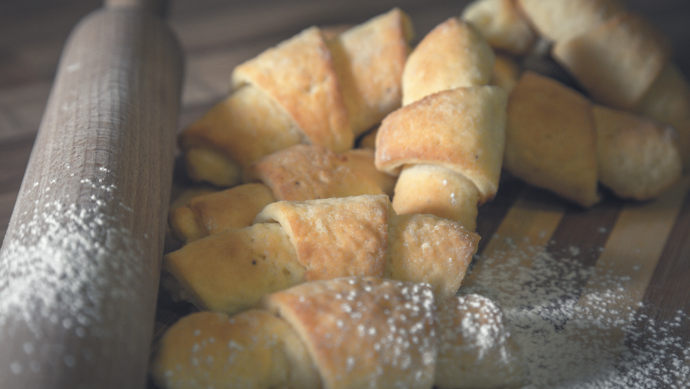7 Gluten-Free Baking Tips & Tricks

Gluten-free baking is a chemical experiment and therefore it is recommended to follow the recipes as closely as possible. Below are some tips and tricks for gluten-free baking. These give hints on additional ways to improve recipes and suggestions for substitutes for bakers who have an additional allergy, intolerance, or autoimmune condition.
1. Baking Times
Baking times may vary depending on the type of pan used. Be sure to follow the manufacturer's instructions for the pan you are using and use the pan for which the particular recipe is intended. Oven temperatures can also vary from kitchen to kitchen, so it is important to set or test them. Therefore, it is important to set or test the temperature. For this, it is important to buy an oven thermometer and set the temperature accordingly. If you place your baked goods in the middle of the preheated oven, you can bake them evenly. Remember that baking times for gluten-free foods vary greatly, and it's important to keep a constant eye on your creation to observe the colors and textures that indicate the degree of cooking. These recipes often require longer baking times at a lower temperature than traditional recipes.
2. Taste
New bakers should try adding additional vanilla and/or spices to recipes. Gluten-free flours often have unique flavors, and adding additional flavors to recipes helps mask these unfamiliar flavors.
3. Fresh
Gluten-free grains and gluten-free starches do not keep indefinitely. Therefore, it is recommended that they be purchased in smaller quantities and stored in the refrigerator or freezer to preserve the essential qualities of the ingredients. Some flour can even be made at home by buying the whole grain and then processing it with a coffee grinder. To prevent baked goods from becoming soggy, place them on a wire rack as soon as possible after baking to cool thoroughly. Leftovers can be frozen to preserve freshness. Just be sure to thaw them completely before eating.
4. Leavening & High Altitude
2 teaspoons of baking powder per cup of gluten-free flour is necessary to ensure a good sourdough. Baking soda and buttermilk can be used instead of baking powder to leaven the dough, but 1-1/8 teaspoons of cream of tartar should be added for every 1/2 teaspoon of baking soda. If you dissolve the leavening agents in liquid before adding to the dough, the product will rise better. High altitude gluten-free baking requires less liquid and either a higher oven temperature or longer baking time. Start by omitting 2 tablespoons of liquid and increasing the oven temperature by 25° F.
5. Moisture
There are many ways to increase the moisture in a recipe. For recipes that call for pureed fruit, sour cream, or yogurt, you can generally rely on a moist product. If your recipe does not call for these ingredients, you can use brown sugar instead of white sugar to increase moisture. Honey and agave as sugar substitutes can also provide more moisture, but note that since honey and agave are not solid ingredients, you should slightly reduce the other liquids you use in the recipe. Adding an extra egg or oil can also be helpful, but use with caution.
6. Nutrition
Using 1/4 cup ground flax seeds in 1/4 cup water instead of 1/4 cup flour will increase the nutritional value in any recipe.
7. Build
As you probably know, gluten is the ingredient most responsible for the structure of baked goods in traditional recipes. Using milk solids or cottage cheese in a recipe can help mimic the gluten-containing structure. Sometimes the above moisture tricks can also solve texture problems with products that are too dense and crumbly. It is important not to knead or beat gluten-free dough too much, as gluten does not develop during kneading.
